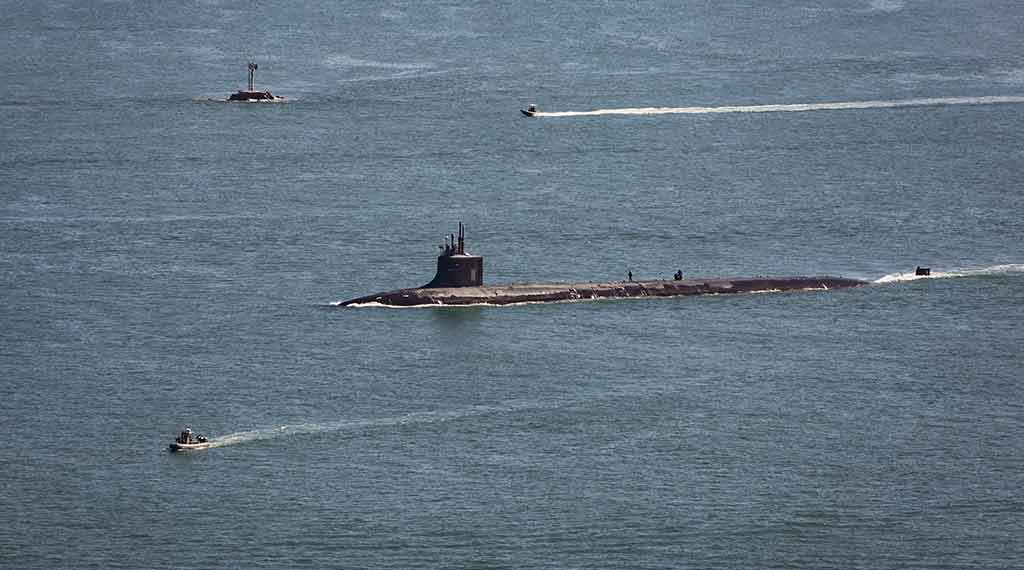
The U.S. Navy’s fleet of submarines carries more than half of America’s operational nuclear deterrent arsenal, making these vessels the most survivable leg of the nuclear triad. The fleet is getting ready to welcome the latest class of nuclear-armed ballistic missile submarines — the Columbia class.
Designed to replace Ohio-class submarines, the next-generation Columbia class vessels are expected to enter service within the next decade. The Navy is planning to develop and purchase 12 Columbia-class boats at a cost of $132 billion. The price may seem high, but the class will bring on board the largest and most complex submarines to ever operate. The ships are planned to be around 560 feet long, with 21,000 tons of displacement. Featuring a life-of-ship reactor, Columbia-class submarines are expected to remain in service for 40 years. In June, the Navy revealed that the first Columbia-class vessel will be named USS District of Columbia (SSBN-826).
Problem: Possible Delays?
The Navy worked with General Dynamics Electric Boat to design the initial Columbia-class concept in 2007. Since nuclear-armed ballistic submarines guarantee retaliatory destruction of any enemy that attacks America with nuclear weapons, the development of the class is a top priority for the U.S. Department of Defense. While the Navy hopes to procure these new submarines more quickly than it has done for the lead ships of previous classes, the U.S. Government Accountability Office is not confident. Earlier this year, GAO and DOD guidance detailed how a lack of a statistical schedule risk analysis could impact the new class.
The first Columbia-class submarine has been in the works for more than a year. Challenges with the ship’s design, materials, and quality have led to several delays in the submarines’ construction. A report released by GAO in January examined “the extent that (1) the Navy and DOD assessed risks to achieving the lead Columbia class submarine’s schedule, and (2) the program faced challenges constructing the lead submarine and mitigating construction risks to the class.”
Each Columbia-class submarine will be equipped with 16 missile tubes for launching Trident II D5 submarine-launched ballistic missiles. From the ninth boat onwards, an upgraded D5LE2 ballistic missile will be installed. The fielding of the joint project between the U.S. and the United Kingdom is cost-effective since the two naval powers will share the cost of the common missile compartment.
As detailed by Military Aerospace, “The common missile compartment, being designed for the Ohio and Vanguard submarine replacement vessels, will house submarine-launched ballistic missiles in quad-packs aboard future U.S. and United Kingdom missile boats. The common missile compartment carry the UGM-133 Trident II nuclear missile, one of the most advanced submarine-launched atomic missiles in the world.”
When Will the Columbia-Class Arrive?
Electric Boat carried out a keel laying ceremony last year for the USS District of Columbia. While this symbolizes the eventual introduction of the Columbia class to service, the potential setbacks and delays spelled out by the GAO are concerning. Since the Ohio-class submarines should be ending their service lives around 2027, the timely introduction of the Columbia-class vessels is crucial.
- America’s Supercarriers Are Back in Force in the Pacific - December 30, 2025
- Israel’s $2 Iron Beam Laser Could Disrupt Missile Warfare - December 23, 2025
- US Stands Up New Drone Strike Force in the Middle East - December 9, 2025
